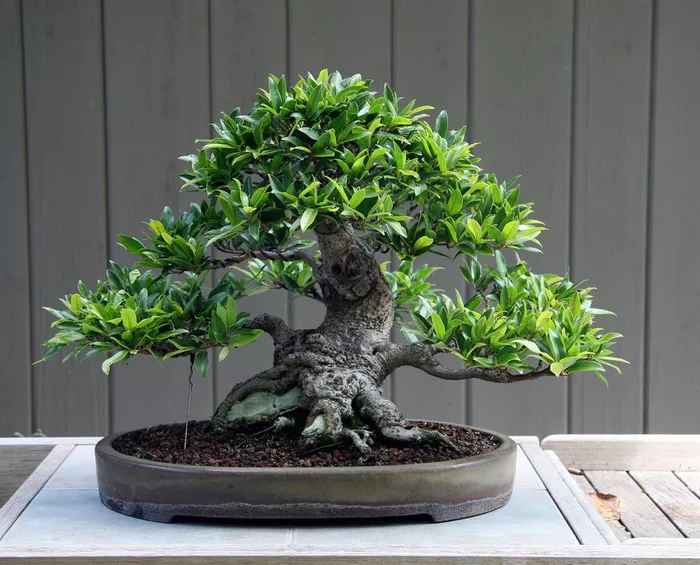Bonsai, the ancient Japanese art of cultivating miniature trees, is a practice that requires patience, dedication, and a deep understanding of horticulture. While traditionally associated with species like junipers and pines, enthusiasts are increasingly drawn to the challenge of bonsai oak trees. With their majestic stature and symbolic significance, oak trees offer a unique canvas for bonsai artists to express their creativity. In this comprehensive guide, we will explore the techniques and principles behind cultivating bonsai oak trees, from selecting the right specimen to nurturing its growth and shaping its form.
Selecting the Right Oak Species
The first step in bonsai oak cultivation is choosing the right species. While there are over 600 species of oak trees, not all are suitable for bonsai. Some popular options include:
11. Quercus robur (English Oak): Known for its sturdy branches and distinctive lobed leaves, the English Oak is a classic choice for bonsai enthusiasts. Its slow growth rate and ability to develop fine ramification make it well-suited for bonsai cultivation.
2. Quercus serrata (Japanese Oak): Native to Japan, the Japanese Oak is prized for its elegant foliage and graceful branching structure. It adapts well to bonsai techniques and thrives in temperate climates.
3. Quercus suber (Cork Oak): Characterized by its thick, cork-like bark, the Cork Oak is a unique option for bonsai enthusiasts seeking a more unusual specimen. Its rugged appearance adds visual interest to bonsai compositions.
Obtaining a Suitable Specimen
Once you’ve chosen a species, the next step is to acquire a suitable specimen. Bonsai oak trees can be grown from seeds, cuttings, or nursery stock. However, due to their slow growth rate, many enthusiasts prefer to start with nursery stock or pre-bonsai material to accelerate the bonsai development process. When selecting a specimen, look for:
1. Trunk Girth: Choose a specimen with a thick trunk, as this will give your bonsai a sense of maturity and presence.
2. Nebari (Root Spread): Examine the root base to ensure it has a well-developed nebari, or surface roots, which are essential for stability and aesthetic appeal.
3. Branch Structure: Look for a specimen with well-positioned branches that can be trained and manipulated to create the desired bonsai silhouette.
Preparing the Oak Tree for Bonsai Cultivation
Once you’ve obtained a suitable specimen, it’s time to prepare it for bonsai cultivation. Start by repotting the tree into a bonsai pot or container with well-draining soil. Trim any long or thick roots to encourage radial root growth and establish a nebari. Prune away any unwanted branches or foliage to create a clean, open framework for future development.
Training and Shaping Techniques
Training and shaping are fundamental aspects of bonsai cultivation, and oak trees respond well to a variety of techniques. Some common methods include:
1. Wiring: Use aluminum or copper wire to gently bend and shape the branches of your oak bonsai. Start with thicker wire at the base of the branch and gradually transition to thinner wire toward the tip to avoid damage.
2. Pruning: Regular pruning is essential for maintaining the desired shape and size of your bonsai oak tree. Remove any crossing or competing branches, as well as any unwanted growth that detracts from the overall aesthetic.
3. Defoliation: In some cases, defoliating your oak bonsai can help encourage ramification and promote finer foliage. However, exercise caution and only defoliate healthy, vigorous trees during the appropriate season.
4. Pinching: Pinching involves removing the tips of new growth to encourage branching and denser foliage pads. This technique is particularly effective for refining the silhouette of your bonsai oak tree.
Patience and Persistence
Bonsai cultivation is a long-term endeavor that requires patience, dedication, and a willingness to learn from both successes and failures. Remember that bonsai trees are living organisms that require care and attention to thrive. Monitor your oak bonsai regularly for signs of stress or disease, and adjust your care routine accordingly.
Conclusion
Cultivating bonsai oak trees is a rewarding yet challenging pursuit that offers endless opportunities for creativity and expression. By selecting the right species, obtaining a suitable specimen, and mastering techniques such as training, shaping, and pruning, you can create a miniature masterpiece that captures the timeless beauty of nature. Remember to approach bonsai cultivation with patience and respect, and you’ll be rewarded with a living work of art that brings joy and inspiration for years to come.


